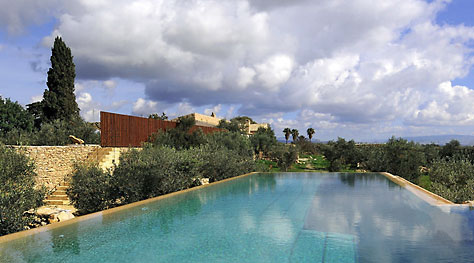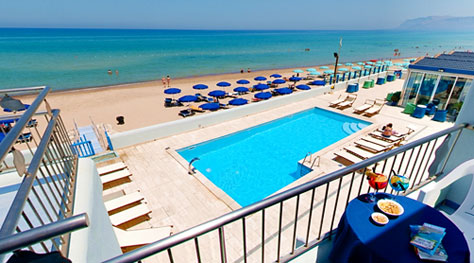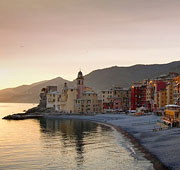Trapani inside and out
From Erice to Marsala, via Trapani: Sicily's recently reborn coastal city.
This exploration of the northwest coast of Sicily gets off to a flying start, aboard the funicular train which, transports passengers from Trapani to the top of Mount Eryx and the town of Erice.
As the train makes its ascent towards this charming medieval town, passengers are treated to phenomenal views of the whole province of Trapani; the area's immense salt marshes shrinking into little more than a small pink-colored stain on the surface of the intense blue sea, which, at this stage, is some 750 meters below.
Castles and churches
On your arrival in Erice, where even on the hottest days of the year the air still feels wonderfully cool, you'll be greeted by a magnificent view of the mountains surrounding the Bay of San Vito Lo Capo, and the promontory from where, on clear days, the coasts of both Sardinia and Tunisia can be seen.
Erice has two castles, Castello Pepoli and Castello Venere, the latter built on the site of an Ancient Greek temple dedicated to the pagan goddess of love
Then there are the churches: Erice has more than 70: too many to mention here but a joy to discover one by one, as you wander through the maze of little lanes and alleyways which characterize the town.
The city of two seas
Lying directly beneath Erice, Trapani was built on a promontory lapped by the sea on both sides, and is often referred to as the "city of two seas".
Life in the city still rotates around the port, from where boats heading to the nearby Egadi Islands depart. In 2005, Trapani was chosen to host one of the European legs of the America's Cup. Since then, Trapani has been the subject of an impressive renaissance, which has included the restoration of dozens of patrician town houses in the historic center.
Trapani's Torre di Ligny, built in the late 17th century as a coastal defense tower, now provides the seat for the city's Museum of Pre-historic and Marine Archeology. In the summer, the rocks around the tower function as popular urban beach.
Pop into Trapani's Chiesa del Purgatorio to see the Gruppo Sacro dei Misteri: the twenty beautiful wooden statues which are paraded through the streets of the city each Good Friday
Salt and wine
Not far from Trapani, on the road to Marsala, we come to the Paceco salt plains. Here, the great expanses of pink salt form a candy-colored lunar landscape, inhabited by colonies of flamingos and dotted with the windmills used to grind the salt.
Marsala is most famous for its fortified wine and for having been the landing site of Garibaldi's "thousand men" in 1860.The arrival of this small army on Sicilian soil marked the fall of the Kingdom of the Two Sicilies and the start of a process which was to conclude with the Unification of Italy.
Marsala's Tapestry Museum contains eight 16th century tapestries of Flemish origin, depicting scenes such as the Capture of Jerusalem and the war fought between Titus and the Jews in 66-67 A.D.
Itineraries
Main destinations
Hotels in the area
- Useful links
- Sicily
- Trapani Hotels
- Sicily (all hotels)



















